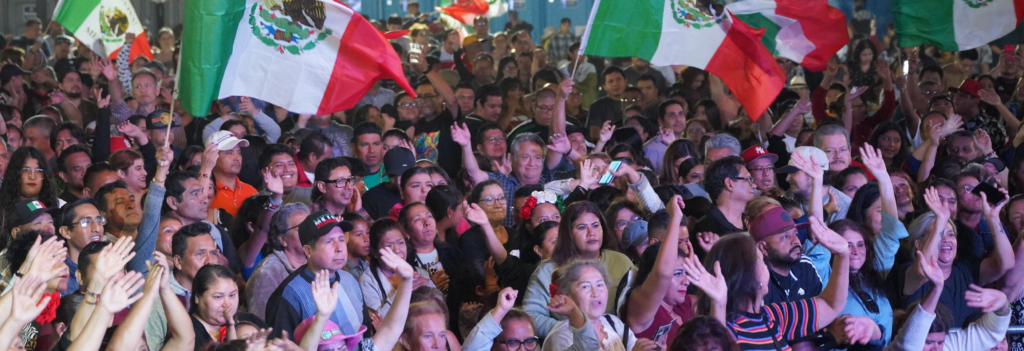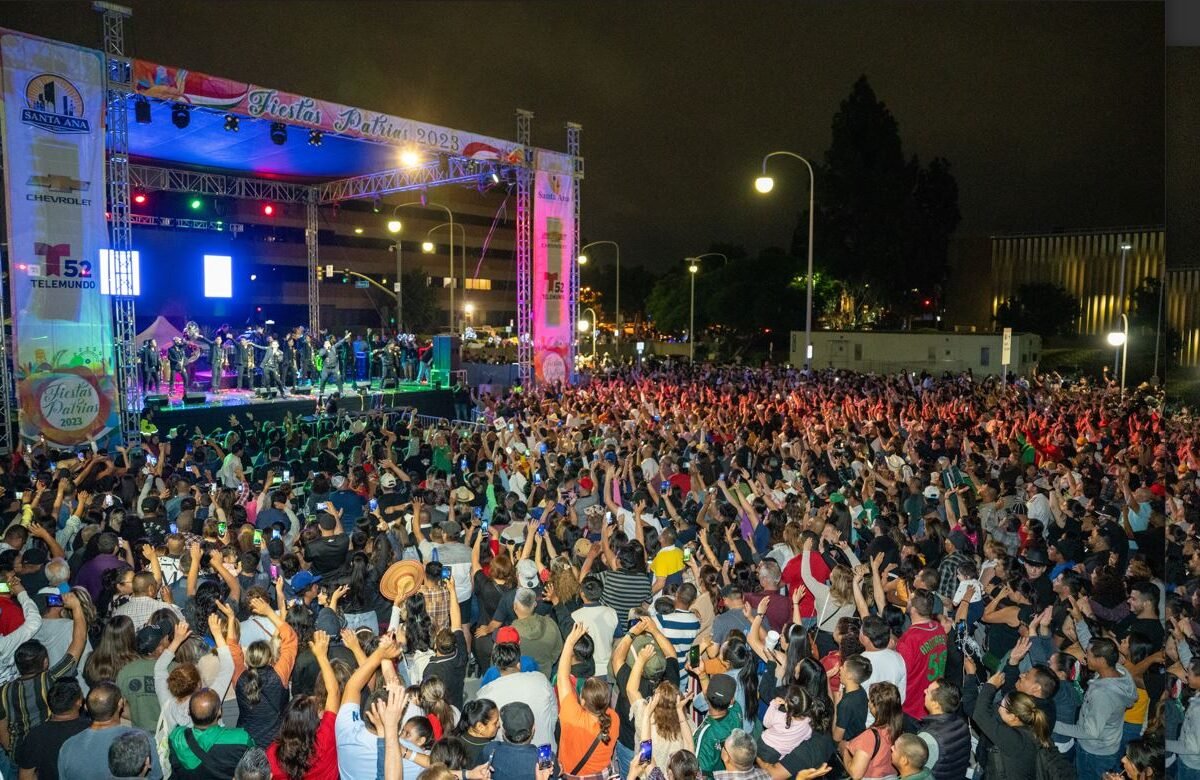Every September, the streets of Santa Ana, California, come alive with the vibrant sounds, colors, and flavors of Fiestas Patrias. This annual festival commemorates the independence of Mexico and other Latin American countries from Spanish rule, serving as a testament to the rich cultural heritage of the Latino community in Orange County. Thousands gather to celebrate, participate in traditional performances, and embrace the deep historical significance behind the event.
A Celebration of Independence and Unity
Fiestas Patrias, translating to “Patriotic Holidays,” marks the historic moment on September 16, 1810, when Miguel Hidalgo y Costilla, a Catholic priest, delivered the “El Grito de Dolores” speech. This passionate call to arms ignited the Mexican War of Independence against Spanish colonial rule. Over two centuries later, this cry for freedom resonates deeply within the Mexican and broader Latino communities, symbolizing resilience, unity, and cultural pride.
In Santa Ana, the festival has become a cornerstone event, reflecting the city’s diverse Latino population. The annual Fiestas Patrias draws thousands of attendees, all eager to partake in the festivities and honor their ancestral roots. The event not only commemorates independence but also serves as a unifying force for generations, bringing families, friends, and community members together.
Festivities That Engage and Inspire

The two-day festival offers a rich tapestry of activities designed to engage all ages. Attendees can immerse themselves in a lively carnival atmosphere, savor authentic cultural cuisine, and enjoy live music performances that span traditional mariachi to contemporary Latin pop. Art installations and cultural exhibitions provide deeper insights into the history and traditions of various Latin American countries. A highlight of the event is the ceremonial “El Grito de Independencia,” a reenactment of Hidalgo’s historic cry, fostering a profound sense of connection to the past.
The festival also features a vibrant parade, showcasing colorful floats, traditional dancers, and community leaders. Participants don elaborate costumes, and the streets resonate with music and cheers, creating an atmosphere of joy and unity. Local artisans display handcrafted goods, offering attendees the chance to take home a piece of the culture. Children and families engage in interactive activities that educate them on the significance of the day while allowing them to have fun in an enriching environment.
Preserving Traditions Amidst Modernity
For many attendees, Fiestas Patrias is more than a celebration; it’s a vital link to their heritage. It serves as a living reminder of their history, customs, and traditions passed down from previous generations. The festival is a platform where the younger generation can connect with their roots, ensuring that cultural values remain intact despite changing times.
Community members emphasize the importance of such events in maintaining traditions. Parents bring their children to experience the cultural aspects they grew up with, ensuring that these traditions continue to thrive. The festival is not just about music and dance; it is about storytelling, passing down history through performances, and reinforcing cultural identity in a world that is rapidly evolving.
City’s Commitment to Cultural Heritage
The City of Santa Ana plays a pivotal role in organizing and supporting Fiestas Patrias. City officials recognize the festival’s importance in celebrating the rich cultural tapestry of the community. The event is free to the public, ensuring accessibility for all residents and visitors. The city’s commitment extends beyond the festival, with ongoing support for cultural programs and initiatives that highlight the contributions of the Latino community to the region’s history and development.
Local businesses also play a significant role in supporting the event, sponsoring different attractions, and participating in the celebrations. Street vendors, food stalls, and family-run businesses see a significant boost during this period, creating economic opportunities while reinforcing cultural ties. Restaurants prepare special menus inspired by traditional dishes, bakeries craft festive treats, and merchants showcase authentic handcrafted goods.
The city recognizes the festival’s importance not just in a historical sense but also in fostering economic growth and strengthening community bonds. By continuing to support Fiestas Patrias, the city of Santa Ana ensures that future generations will have the opportunity to celebrate and embrace their heritage.
The Role of Music and Dance
Music and dance form the heart of Fiestas Patrias, making the celebration even more electrifying. Traditional Mexican music, including mariachi bands, norteño, and banda performances, set the stage for an energetic and immersive experience. These performances capture the essence of Latin American culture, reflecting a mix of indigenous, African, and European influences that have shaped Latin music over centuries.
Dance groups perform traditional folkloric dances, donning vibrant costumes adorned with intricate embroidery and flowing skirts. These dances tell stories of the past, embodying the struggles and triumphs of their ancestors. Whether it’s the rhythmic zapateado of Jalisco or the energetic quebradita, each performance holds deep cultural significance.
Beyond traditional performances, contemporary Latin artists also take center stage, blending modern sounds with traditional influences. This fusion showcases the evolution of Latino music and its global impact, reinforcing the festival’s role in celebrating both heritage and progress.
Culinary Delights: A Feast for the Senses
One of the biggest attractions of Fiestas Patrias is the food. Authentic Latin American cuisine is at the heart of the festival, with street vendors and food trucks offering a diverse selection of traditional dishes. From sizzling tacos and tamales to freshly made churros and elotes, the festival is a food lover’s paradise.
Mexican delicacies such as mole, pozole, and pambazos provide a taste of home for many attendees. The aroma of grilled meats, simmering spices, and fresh tortillas fills the air, drawing people into food stalls where generations-old recipes are prepared with love and care. Drinks like horchata, aguas frescas, and micheladas add to the festive experience, offering a refreshing complement to the savory treats.
Food is more than just sustenance; it is a cultural expression. Sharing a meal at Fiestas Patrias is an experience that fosters connection, bringing people together in celebration and appreciation of culinary traditions.
Looking Ahead: Fiestas Patrias 2025
As the festival continues to grow in popularity, plans are already underway for the next Fiestas Patrias celebration. The upcoming event promises to be a vibrant gathering, honoring the independence of various Latin American countries, including Guatemala, Costa Rica, El Salvador, Honduras, Nicaragua, Chile, and Mexico. The festival will continue to showcase the city’s rich cultural tapestry, offering a platform for both residents and visitors to engage with and appreciate the diverse traditions that define Santa Ana.
With the commitment of city officials, local businesses, and the passionate Latino community, Fiestas Patrias will continue to thrive, serving as a beacon of cultural pride and unity. The future holds even more opportunities for expansion, including enhanced performances, educational initiatives, and interactive workshops that allow attendees to dive deeper into the cultural significance of the event.
Conclusion
Fiestas Patrias in Santa Ana stands as a vibrant testament to the enduring spirit and cultural pride of the Latino community. Through music, dance, food, and communal celebration, the festival not only honors historical milestones but also strengthens the bonds of community and ensures that rich traditions are passed down to future generations. As the city looks forward to future celebrations, Fiestas Patrias remains a cherished event, embodying the heart and soul of Santa Ana’s diverse populace. The festival is more than just an event—it is a symbol of unity, heritage, and the unwavering strength of cultural identity.
Orange County Officials Debate Future of Gas-Powered Water Heaters






